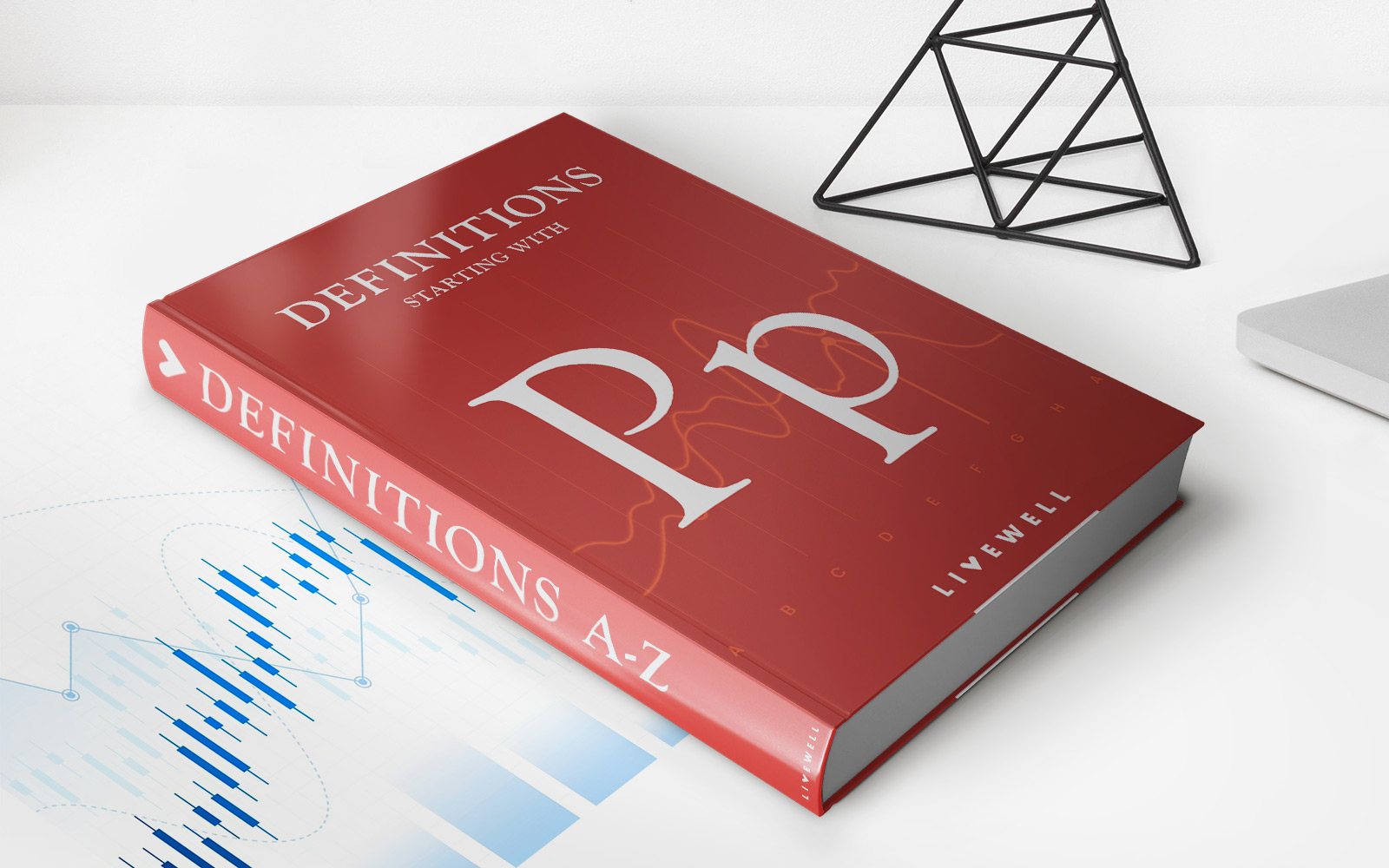

Finance
What Is A SERP Pension
Published: November 27, 2023
Learn what a SERP pension is and how it can impact your finances. Discover the key benefits and considerations of this retirement plan.
(Many of the links in this article redirect to a specific reviewed product. Your purchase of these products through affiliate links helps to generate commission for LiveWell, at no extra cost. Learn more)
Table of Contents
- Introduction
- Definition of SERP Pension
- Features of SERP Pension
- Benefits of SERP Pension
- Eligibility for SERP Pension
- How to Calculate SERP Pension
- Funding and Contributions for SERP Pension
- Tax Implications of SERP Pension
- Advantages of SERP Pension
- Disadvantages of SERP Pension
- Comparison of SERP Pension with Other Retirement Plans
- Conclusion
Introduction
Retirement planning is a critical aspect of financial management, and one of the key components in ensuring a comfortable and secure future. While many individuals rely on traditional retirement plans such as employer-sponsored pensions or individual retirement accounts (IRAs), some may have the opportunity to participate in a Supplemental Executive Retirement Plan (SERP).
SERPs, often offered to high-level executives or key employees, provide an additional layer of retirement benefits beyond what is offered by other retirement plans. In this article, we will explore what a SERP pension is, its features, eligibility criteria, and the pros and cons associated with it.
A SERP pension is essentially a promise by an employer to provide certain retirement benefits to selected employees. It is designed to supplement the retirement income provided by other retirement plans and is often a part of an executive compensation package. SERPs are primarily established to help retain and incentivize top talent by offering attractive retirement benefits that go beyond what is typically available through traditional retirement plans.
It is important to note that SERP pensions are typically offered by larger corporations or organizations that have the financial means to provide such additional benefits. The eligibility for a SERP pension is usually based on factors such as seniority, position within the company, and performance. Executive-level employees who contribute significantly to the success and growth of the organization are generally the ones who are offered these benefits.
Now that we have a basic understanding of what a SERP pension is, let’s delve deeper into its features, the benefits it offers, and how it differs from other retirement plans.
Definition of SERP Pension
A Supplemental Executive Retirement Plan (SERP) pension is a type of retirement plan that provides additional retirement benefits to selected employees, typically high-level executives or key employees, beyond what is offered by traditional retirement plans. It is a promise made by the employer to provide certain retirement benefits to these individuals, often as a part of their compensation package.
The key distinction of a SERP pension is that it is an unfunded, non-qualified plan, meaning that the benefits are not funded by employee contributions and do not have to adhere to the same rules and limits as qualified retirement plans, like 401(k) or IRAs. Instead, the employer takes on the responsibility of funding and fulfilling the promised retirement benefits.
SERPs are usually tailored to fit the individual circumstances of each executive or key employee. The benefits offered can vary based on factors such as salary, years of service, and specific agreements made between the employee and the employer. These benefits can be a combination of cash payments, deferred compensation, or other forms of retirement income.
Unlike traditional pension plans, which are often based on a formula that considers factors like years of service and average salary, SERP pensions are typically negotiated individually and are not subject to the same regulatory restrictions. This allows employers to tailor the benefits to suit the needs of the executives and key employees, providing them with additional financial security during retirement.
It is important to note that SERP pensions are considered an employer-sponsored benefit, and therefore, the funds used to fulfill the promises made under the plan remain under the control of the employer until the retirement benefits are paid out. This can result in potential risks, as the employee’s retirement income is dependent on the financial stability and commitment of the employer to fulfill its obligations.
In the next section, we will explore the features and benefits of SERP pensions, helping you gain a better understanding of why they are an attractive addition to an executive compensation package.
Features of SERP Pension
SERPs (Supplemental Executive Retirement Plans) have several distinct features that set them apart from traditional retirement plans. Understanding these features is essential to grasp the unique benefits that a SERP pension offers. Let’s explore some key features:
- Additional Retirement Income: The primary purpose of a SERP pension is to provide selected executives or key employees with supplementary retirement income beyond what is offered by other retirement plans. This allows individuals to maintain their lifestyle and financial security during their retirement years.
- Customized Benefits: Unlike traditional pension plans, SERPs are typically individually negotiated agreements between the employer and the employee. This means that the benefits can be customized to meet the specific needs and circumstances of the executive or key employee, taking into account factors such as salary, years of service, and performance.
- Non-Qualified Plan: SERP pensions are considered non-qualified plans, meaning they are not subject to the same regulatory requirements and limitations as qualified retirement plans like 401(k)s or IRAs. This gives employers more flexibility in designing the plan and tailoring it to the unique needs of their executives or key employees.
- Unfunded Plan: Unlike traditional pension plans that are typically funded through a trust or investment vehicle, SERP pensions are unfunded. This means that there are no specific assets set aside to pay for the promised benefits. Instead, the employer assumes the responsibility of fulfilling the obligations when the time comes for retirement payouts.
- Vesting Periods: SERP pensions often have specific vesting periods, which determine when the executive or key employee becomes entitled to the promised benefits. Vesting periods can be based on years of service, performance milestones, or a combination of factors, and they ensure that the employer retains top talent and incentivizes long-term commitment to the organization.
- Flexibility in Payout Options: SERP pensions generally offer flexibility in terms of the payout options available to the beneficiaries. This can include lump-sum payments or structured periodic payments over a specified period. The choice of payout option can depend on the preferences and financial needs of the retiree.
These features make SERP pensions an attractive addition to executive compensation packages, providing executives and key employees with additional financial security and rewarding their contributions to the organization. In the next section, we will explore the benefits that come with participating in a SERP pension.
Benefits of SERP Pension
Participating in a Supplemental Executive Retirement Plan (SERP) pension comes with a range of benefits that make it an appealing option for high-level executives and key employees. These benefits not only provide additional financial security during retirement but also serve as powerful incentives to attract and retain top talent. Let’s explore the benefits of a SERP pension:
- Increased Retirement Income: One of the primary benefits of a SERP pension is the ability to receive additional retirement income beyond what is provided by other retirement plans. This can help maintain a comfortable lifestyle and provide financial security during the retirement years.
- Customized Benefits: SERPs are individually negotiated agreements, allowing for customized benefits that address the unique needs of the executive or key employee. This flexibility ensures that the retirement benefits align with their specific financial goals and circumstances.
- Retention of Top Talent: Offering a SERP pension can be a powerful tool for attracting and retaining high-performing executives and key employees. The promise of enhanced retirement benefits demonstrates a commitment to their long-term financial well-being, which can foster loyalty and incentivize continued contributions to the organization.
- Tax Advantages: SERP pensions can provide tax advantages for both the employer and the employee. While employer contributions to a SERP pension are typically not deductible, the benefits received by the employee can often be taxed at a lower rate compared to regular income, potentially resulting in tax savings.
- Flexibility in Payout Options: SERP pensions often offer flexibility in how the retirement benefits are paid out. This can include lump-sum payments or structured periodic payments, allowing retirees to choose the option that best suits their financial needs and goals.
- Supplementary to Other Retirement Plans: SERPs are designed to supplement other retirement plans, such as 401(k)s or IRAs, providing an additional layer of financial security and income during retirement. This can help bridge any potential gaps and ensure a more comfortable retirement lifestyle.
- Executive Compensation Package Enhancement: Including a SERP pension as part of an executive compensation package can enhance the overall attractiveness of the package, making it more appealing to potential candidates and reinforcing the organization’s commitment to rewarding and retaining top talent.
These benefits make participating in a SERP pension a valuable component of an executive’s financial strategy. However, it is essential to understand the eligibility criteria and calculations associated with a SERP pension, as well as its potential drawbacks, which we will explore in the following sections.
Eligibility for SERP Pension
The eligibility criteria for a Supplemental Executive Retirement Plan (SERP) pension can vary depending on the organization and the specific agreements in place. While there is no standardized eligibility framework, certain factors are commonly considered when determining who is eligible for a SERP pension. Let’s take a closer look at these factors:
- Position and Seniority: SERP pensions are typically offered to high-level executives or key employees who hold significant positions within the organization. These individuals are often responsible for shaping the company’s strategic direction and driving its success.
- Performance and Contribution: To be eligible for a SERP pension, an individual’s performance and contribution to the organization are closely evaluated. Executives and key employees who have demonstrated exceptional performance, contributed significantly to the company’s growth, and achieved important milestones are often considered for SERP participation.
- Long-Term Commitment: Employers offering SERP pensions typically seek individuals who are committed to long-term tenure with the organization. This helps ensure that the organization can reap the benefits of their expertise and experience, and that the retirement benefits promised under the SERP can be earned and enjoyed during an extended period.
- Negotiation and Agreement: The eligibility for a SERP pension is not automatic and is usually negotiated individually between the employer and the employee. The specific terms of the SERP, including eligibility requirements and benefit calculations, are agreed upon and documented in an employment contract or a separate agreement.
It is important to note that eligibility for a SERP pension is typically reserved for a select group of high-level executives and key employees within an organization. It is not offered to all employees and may not be available to those at lower levels or in non-management roles.
When considering eligibility for a SERP pension, employers often take into account the individual’s overall contribution, performance, and potential impact on the company’s success. This helps ensure that the SERP pensions are offered to those who play a crucial role in achieving the organization’s strategic goals and who deserve additional retirement benefits beyond what is provided by other retirement plans.
In the next section, we will explore how SERP pension benefits are calculated, providing insight into how the pension amount is determined for eligible participants.
How to Calculate SERP Pension
The calculation of a Supplemental Executive Retirement Plan (SERP) pension can vary based on the specific agreements between the employer and the eligible employee. Unlike traditional pension plans, which often follow a predetermined formula based on factors like years of service and average salary, SERP pensions are typically individually negotiated. Here are some key factors that may influence the calculation of a SERP pension:
- Salary: The base salary of the eligible employee is often a key factor in the calculation of a SERP pension. The pension benefit may be a percentage of the salary or a predetermined amount agreed upon in the employment contract.
- Years of Service: Depending on the SERP pension’s terms, the employee’s length of service with the organization might be considered in the calculation. This could involve a certain percentage increase in the pension benefit for each year of service or a predetermined additional amount for reaching specific service milestones.
- Performance and Achievement: In some cases, the employee’s performance and achievements within the organization are factored into the SERP pension calculation. Employers may establish performance criteria, such as specific financial targets or strategic milestones, which, if met, can result in an increased pension benefit.
- Other Compensation: SERP pensions can also take into account other forms of compensation received by the eligible employee, such as bonuses, stock options, or incentive plans. These additional components may be factored into the overall pension calculation to provide a comprehensive retirement benefit.
- Investment Returns: Some SERP arrangements may incorporate investment returns into the calculation of the pension benefit. In these cases, the pension amount may be influenced by the performance of certain investment vehicles chosen by the employer to fund the SERP.
The specific calculation methodology and formula for a SERP pension will be outlined in the employment contract or the agreement between the employer and the eligible employee. It is essential for both parties to clearly understand and agree upon the details of the calculation to avoid any misunderstandings in the future.
It is worth noting that the calculation of a SERP pension can be complex, and the involvement of professionals such as actuaries or financial advisors may be required to ensure accurate and fair determinations. These professionals can provide expertise in evaluating the eligibility criteria and generating the pension amounts based on the agreed-upon factors.
Understanding how a SERP pension is calculated is crucial for eligible participants to grasp the retirement benefits they can expect. In the following sections, we will explore the funding and contribution aspects of a SERP pension as well as the tax implications associated with it.
Funding and Contributions for SERP Pension
Supplemental Executive Retirement Plans (SERPs) are often unfunded plans, which means that they do not rely on employee contributions and do not have a specific pool of assets set aside to fund the promised benefits. Instead, the employer takes on the responsibility of funding and fulfilling the SERP pension obligations. Let’s delve into the funding and contributions involved:
Employer Funding: The primary source of funding for a SERP pension comes directly from the employer. The company sets aside funds and allocates them to fulfill the promised retirement benefits for eligible executives and key employees. This funding can come from various sources, such as company profits, cash reserves, or dedicated budgets for executive compensation.
Investment Returns: In some cases, employers may choose to invest the funds set aside for SERP pensions to generate returns over time. These investment returns can contribute to the overall pool of funds available to meet the future pension obligations. However, it is important to note that the investment returns on SERP funds are typically the responsibility of the employer, and any gains or losses are borne by the company.
No Employee Contributions: Unlike qualified retirement plans such as 401(k)s or IRAs, SERPs do not typically involve employee contributions. The entire funding responsibility rests with the employer, and the promised retirement benefits are solely based on the negotiated terms and agreements in place. This distinguishes SERPs from many other retirement plans where employees contribute a portion of their salary towards their retirement savings.
Reverse-Engineering Approach: In some cases, employers may structure SERP pensions based on a reverse-engineering approach. This involves determining the desired retirement benefit amount and then calculating the necessary funding and contributions required to achieve that benefit. This approach allows employers to align the promised retirement benefits with the overall financial goals and capabilities of the organization.
It is important for both the employer and the eligible employee to have a clear understanding of the funding and contribution aspects of the SERP pension. This ensures that the retirement benefits promised under the SERP can be adequately funded by the employer and that there are no discrepancies or misunderstandings regarding the availability of funds during the retirement years.
In the next section, we will explore the tax implications associated with SERP pensions, providing insight into how these retirement benefits are treated from a tax perspective.
Tax Implications of SERP Pension
When it comes to Supplemental Executive Retirement Plans (SERPs), there are specific tax implications that both employers and eligible employees should be aware of. Understanding the tax treatment of SERP pensions is crucial for effective retirement planning. Here are some key tax considerations:
Taxation of Employer Contributions: In general, employer contributions to a SERP pension are not tax-deductible for the employer. Unlike contributions made to qualified retirement plans like 401(k)s, which are typically tax-deductible for employers, SERP contributions are usually considered part of an executive’s compensation package and are paid with after-tax dollars.
Taxation of Benefits: The taxation of SERP pension benefits depends on how the benefits are structured and paid out to the retiree. Generally, SERP benefits are taxable as ordinary income. This means that when the retiree receives the pension payments, they are subject to income tax at the applicable tax rate for that individual.
Deferred Compensation: SERP pensions often involve the deferral of compensation, meaning that the benefits are earned and accumulated during the individual’s employment years but paid out during retirement. The deferred compensation is typically subject to income tax when it is received by the retiree, rather than when it is earned. This can provide some flexibility in managing tax liabilities, particularly if the retiree expects to be in a lower tax bracket during retirement.
Minimum Distribution Requirements: Similar to qualified retirement plans, SERP pensions may be subject to minimum distribution requirements. These requirements dictate that a certain portion of the SERP funds must be distributed to the retiree once they reach a certain age (usually 72), to ensure that the funds are not indefinitely deferred from a tax perspective.
State and Local Taxes: It is important to consider the potential impact of state and local taxes on SERP pension benefits. Taxation rules can vary from one jurisdiction to another, and retirees should consult with tax professionals to understand the specific tax obligations and opportunities in their respective locations.
It is advisable for both employers and eligible employees to work closely with tax advisors or professionals who specialize in executive compensation and retirement planning. These experts can provide guidance on the specific tax implications of a SERP pension, ensuring compliance with tax regulations and optimizing the tax efficiency of the retirement benefits.
In the next sections, we will explore the advantages and disadvantages of SERP pensions, helping weigh the pros and cons of participating in such a retirement plan.
Advantages of SERP Pension
Participating in a Supplemental Executive Retirement Plan (SERP) pension offers several advantages for eligible executives and key employees. These advantages make SERP pensions an attractive addition to an executive compensation package. Let’s explore some of the key benefits:
- Enhanced Retirement Income: One of the primary advantages of a SERP pension is the additional retirement income it provides. SERPs are designed to supplement other retirement plans and ensure a more comfortable lifestyle during retirement. The promise of extra income can help individuals maintain their financial security and enjoy their post-work years.
- Customized Benefits: SERP pensions offer flexibility in designing and tailoring the retirement benefits to match an individual’s specific needs and circumstances. This customization allows eligible employees to negotiate and agree upon benefits that align with their financial goals, providing a level of personalization not typically found in traditional retirement plans.
- Retention and Incentivization: Offering a SERP pension is an effective tool for attracting and retaining top talent. The promise of attractive retirement benefits demonstrates the employer’s commitment to the long-term financial wellbeing of its key employees and incentivizes their continued commitment and loyalty. SERPs can be a powerful tool in talent management strategies.
- Tax Advantages: SERP pensions can offer tax advantages for both employers and employees. While employer contributions may not be tax-deductible, the taxation of SERP benefits is typically at a lower rate compared to regular income tax rates. This can result in potential tax savings for the eligible employee during retirement.
- Flexibility in Payout Options: SERP pensions often provide flexibility in how the retirement benefits are paid out, offering a range of options such as lump-sum payments or structured periodic payments. This flexibility allows retirees to choose the payout option that best suits their financial needs and goals.
- Supplementary to Other Retirement Plans: SERPs are designed to supplement other retirement plans such as 401(k)s or IRAs. By providing an additional layer of retirement income, SERP pensions help bridge any potential gaps in retirement savings and offer a more comprehensive financial safety net during retirement.
The advantages of participating in a SERP pension extend beyond financial considerations. They contribute to the overall satisfaction and loyalty of executives and key employees who feel valued and supported by their employer. SERP pensions serve as effective motivators and rewards for their contributions to the success of the organization.
However, it is essential to consider the potential disadvantages and limitations of SERP pensions, which we will explore in the next section, to gain a complete understanding of their implications.
Disadvantages of SERP Pension
While participating in a Supplemental Executive Retirement Plan (SERP) pension offers numerous benefits, it is important to consider the potential disadvantages and limitations associated with this type of retirement plan. Here are some key factors to be aware of:
- Reliance on Employer: A significant disadvantage of SERP pensions is the reliance on the financial stability and commitment of the employer. Unlike traditional pension plans that are typically governed by strict regulations and funded through dedicated assets, SERP pensions are often unfunded promises made by the employer. This puts the retirement benefits at risk if the employer faces financial challenges or chooses not to honor its obligations.
- Limited Availability: SERP pensions are usually offered to a select group of high-level executives and key employees. This means that many employees within an organization may not have access to this type of retirement benefit. The limited availability can lead to disparities in retirement preparedness and create a perceived inequity among employees.
- Lack of Portability: Another disadvantage of SERP pensions is that they are typically non-transferrable between employers. If an executive or key employee leaves the organization before retirement, they may not be able to take the accrued SERP benefits with them. This lack of portability can limit an individual’s flexibility in managing their retirement savings.
- Subject to Change: The terms and conditions of a SERP pension can be modified by the employer, subject to certain limitations. While the employer is obligated to fulfill the agreed-upon terms, changes to the plan may occur due to business circumstances or restructuring. This introduces an element of uncertainty into the retirement benefits that can impact an employee’s long-term financial planning.
- Tax Implications: While SERP pensions offer potential tax advantages, they can also have tax implications depending on the specific structure and payout options. Taxation rules and regulations can change over time, and retirees need to stay informed about any potential changes that may affect the tax treatment of their SERP benefits.
It is important for both employers and eligible employees to thoroughly evaluate the potential disadvantages and limitations of a SERP pension. Careful consideration should be given to the financial stability and commitment of the employer, the exclusivity of the plan, and the potential impact of changes to the plan on retirement preparedness.
Understanding the potential drawbacks enables individuals to make informed decisions and consider alternative retirement planning strategies when necessary.
In the next section, we will compare SERP pensions with other retirement plans to provide a broader perspective on the different options available.
Comparison of SERP Pension with Other Retirement Plans
When considering retirement planning, it is essential to compare and understand the differences between a Supplemental Executive Retirement Plan (SERP) pension and other commonly available retirement plans. Let’s explore a comparison of SERP pensions with traditional retirement plans:
Qualified Retirement Plans: Qualified retirement plans, such as 401(k)s or employer-sponsored pension plans, are available to a broader range of employees and are subject to strict regulations and contribution limits. These plans often involve employee contributions, matching contributions from the employer, and potential tax advantages for both contributions and earnings. In contrast, SERP pensions are typically unfunded, non-qualified plans that offer more flexibility and customization in terms of benefits but are limited to selected executives and key employees.
IRA and Roth IRA: Individual Retirement Accounts (IRAs) and Roth IRAs are individual retirement plans that allow individuals to save for retirement with potential tax advantages. Both IRAs and Roth IRAs offer contribution limits and potential tax deductions or tax-free withdrawals, depending on the type. Unlike SERP pensions, IRAs are not connected to specific employment and can be portable. However, IRA contributions are subject to annual limits and may not provide the same customized benefits as SERP pensions.
Defined Benefit Pension Plans: Employer-sponsored defined benefit pension plans are designed to provide a fixed income during retirement based on a pre-determined formula that considers factors such as years of service and average salary. These plans are typically funded and subject to strict regulations to ensure the availability of retirement benefits. In comparison, SERP pensions offer more customization in benefits but are not subject to the same funding requirements and regulations.
Executive Deferred Compensation Plans: Executive deferred compensation plans are similar to SERP pensions in that they provide additional retirement benefits for high-level executives. These plans involve deferring a portion of an executive’s compensation until retirement, resulting in potentially tax-advantaged growth. However, deferred compensation plans may not offer the same level of flexibility and customization as SERP pensions in terms of benefit calculations and payout options.
When comparing these retirement plans, it becomes clear that SERP pensions offer certain advantages, such as enhanced retirement income and customized benefits for eligible executives and key employees. However, they also come with potential drawbacks, including reliance on the employer and limited availability to a select group of individuals.
Ultimately, the choice between a SERP pension and other retirement plans depends on individual circumstances, preferences, and the overall compensation package offered by the employer. It is important for eligible employees to carefully evaluate the features, benefits, and potential limitations of each retirement plan option and seek professional financial advice to make informed decisions.
In the concluding section, we will summarize the key points discussed and emphasize the importance of considering all factors when making retirement planning choices.
Conclusion
In conclusion, a Supplemental Executive Retirement Plan (SERP) pension is a valuable retirement planning tool available to high-level executives and key employees. It provides additional retirement income beyond what is offered by traditional retirement plans, offering enhanced financial security during the post-work years. While participating in a SERP pension offers numerous benefits, it is important to carefully consider the eligibility criteria, calculation methods, and potential advantages and disadvantages. Here are key takeaways to remember:
SERP pensions provide customized benefits tailored to the individual’s specific needs, allowing for flexibility and personalization in retirement planning. These pensions can serve as powerful incentives for attracting and retaining top talent, demonstrating the employer’s commitment to the long-term financial well-being of key employees. SERP pensions can also offer potential tax advantages, providing tax savings for eligible employees during retirement.
However, it is crucial to weigh the potential disadvantages, such as reliance on the employer’s financial stability and limited availability to a select group of executives and key employees. SERP pensions may not be portable between employers and the terms of the plan can be subject to change over time.
When evaluating retirement planning options, it is essential to compare SERP pensions with other retirement plans, such as qualified retirement plans, IRAs, defined benefit pension plans, and executive deferred compensation plans. Each option has its own set of features, benefits, and limitations. Considering factors such as funding, taxation, portability, and availability will contribute to a well-rounded retirement plan strategy.
Ultimately, eligible executives and key employees need to make informed decisions based on their specific financial goals, risk tolerance, and overall compensation package offered by the employer. Professional financial advice is crucial to fully understand the implications and make the best retirement planning choices.
By carefully considering all the factors and understanding the features and implications of SERP pensions and other retirement plans, individuals can pave the way for a secure and fulfilling retirement, allowing them to enjoy the fruits of their professional achievements.














